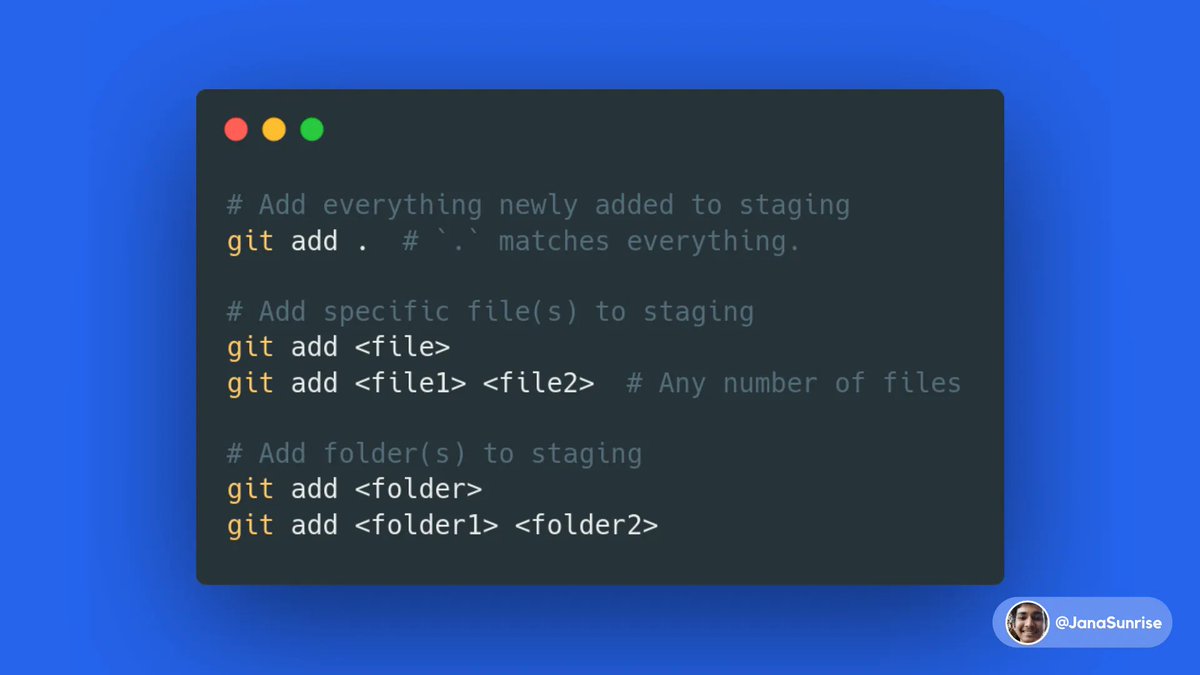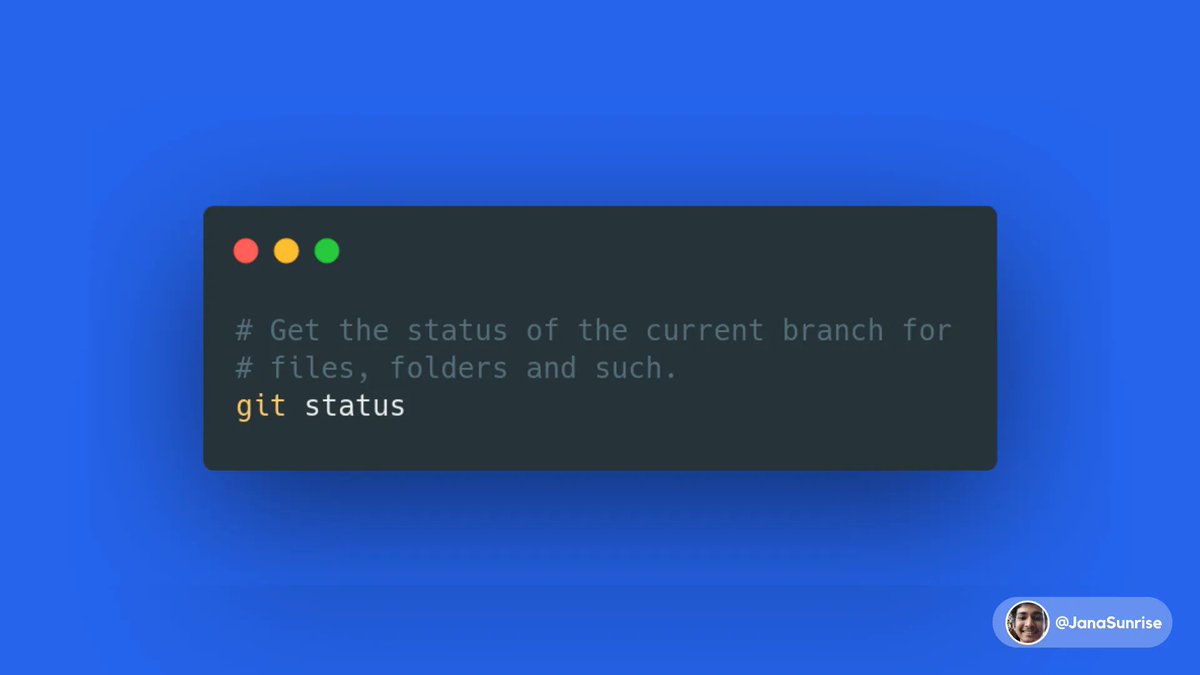Authors Sunrit Jana 🚀
7 days
30 days
All time
Recent
Popular
Git is used in a ton of places. Companies, SaaS, open-source projects use it to work, collaborate and maintain their projects.
All the git commands you would ever need, and also to get you started. Here's a thread for you.
Let's explore all the commands.
↓
This thread is continuation for my thread on Git for everyone, where I explained all about git.
If you haven't checked that out, and if you're willing to, Please do. Appreciate it, Here's the link.
1/ Initializing git in project
This is the command, you would always need. This initializes git, along with it's structure for tracking and managing files, folders and code.
You cannot use any other command, if not initialized.

2/ Adding files to staging
Now, we've initialized repo, and Created files. We have to move the files to staging, before commiting them.
Turns out, there are a lot of ways to do it.

3/ Track changes, and Get info about staging stage
Once we've added files, folders and other things to staging, We have the need to ensure everything's correct, or check if there's something wrong, or keep track.
Git allows to display all the changes, additions, and deletions.

All the git commands you would ever need, and also to get you started. Here's a thread for you.
Let's explore all the commands.
↓
This thread is continuation for my thread on Git for everyone, where I explained all about git.
If you haven't checked that out, and if you're willing to, Please do. Appreciate it, Here's the link.
Git is an incredible tool made for easily managing your projects, it's history and version control \U0001f525
— Sunrit Jana \U0001f680 (@JanaSunrise) November 5, 2021
It is really easy to learn, yet can save you a lot of hassle and time managing projects.
Here's a mega thread to walk you through all about git. Let's go! \u2193
1/ Initializing git in project
This is the command, you would always need. This initializes git, along with it's structure for tracking and managing files, folders and code.
You cannot use any other command, if not initialized.

2/ Adding files to staging
Now, we've initialized repo, and Created files. We have to move the files to staging, before commiting them.
Turns out, there are a lot of ways to do it.

3/ Track changes, and Get info about staging stage
Once we've added files, folders and other things to staging, We have the need to ensure everything's correct, or check if there's something wrong, or keep track.
Git allows to display all the changes, additions, and deletions.





